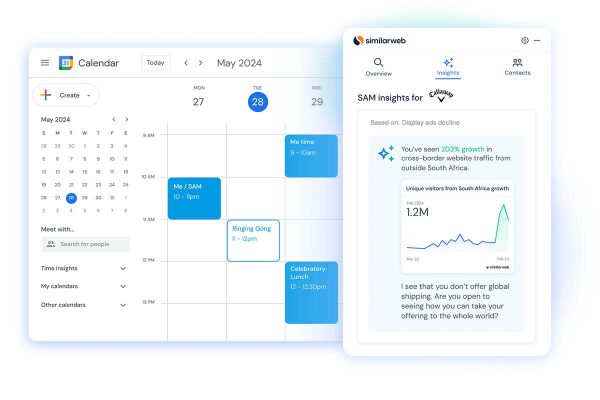E-commerce has experienced exponential global growth over the last decade. A wider array of markets has encouraged greater competition and provided more opportunities for online merchants to reap the rewards.
Marketplaces can help you slide into overseas markets with out many of the obvious hassles – language, logistics, currency, returns and culture – but there are still some key issues to consider even when looking to do this.Staying ahead of the competition in such a climate is easier said than done and, if not approached properly, going global can put merchants at risk of falling behind.
Here Ralf Ohlhausen, Business Development Director, PPRO Group, outlines ten simple steps to help make a success of going global
- Assess cross-border market opportunities
Consider the barriers to trade in the regions that interest you, making sure the benefits of doing business in the area outweigh the costs of meeting market needs and expectations. Also, don’t dismiss high-growth markets, such as Vietnam and Poland, which might be relevant for your business, but not the regions that spring to mind when looking for new sales opportunities and cross-border expansion. - Know your market and audience
This is important not only in terms of what you sell and to who, but also in terms of the most relevant payment preferences. Online casinos do not accept credit card payments due to the fraud potential, while travel websites need to offer customers the option to pay via credit card due to the high value of the transaction. Sale conversions are linked to the provision of appropriate payment methods – and payment behaviour varies by demographic, just as purchasing behaviour does. In many cultures, younger people are more likely to use non-traditional payment methods, but if your target audience is primarily older, this may not be relevant. Do your research by considering all important marketing segments before you begin to trade. - Plan your marketing strategy
If you are new to a region, you need to raise your profile and gain customer trust to convert browsers into buyers. Consider your target market carefully. For example, a German national buying furniture online would rather not pay for a new sofa in advance, but wait for delivery and then pay directly from their account. Think about the behaviour of your target customer and which marketing strategies will resonate most successfully with them. If this is out of your remit, then working with a local marketing partner will provide the necessary knowledge to attract and retain business in the region, supporting long term growth. - Plan your market entry
The best marketing plan in the world will fail if not supported by a well thought through market entry strategy. Consider the best way to set-up shop in a new region, as it will differ depending upon your business model and regional knowledge. Do you need to use a partner to begin with, to sell via an online market place, auction site or through an established local vendor? If so, for how long? Or can you go it alone from the start? - Consider your market share and positioning
Your current market/s may be crowded or dominated by one or two big names. If you enter an emerging market with a carefully tailored and localised offering, you could grab a large slice of that niche before others do. - Review payment methods
When it comes to payment options, decide how much risk you are happy with. Some payment methods may be convenient for customers, but carry a greater burden of chargeback/refund risk or other cost to the vendor. Such risk can often be mitigated, for example by offering less riskier forms of payment, such as SEPA direct debits, for goods below a certain value or to trusted customers. So-called ‘push payments’, which are proactively sent by the client, are less risky in terms of chargeback but their use must be balanced with local preferences. Examples of push payments include giropay in Germany and iDEAL in the Netherlands. - Personalise your e-commerce offering for local needs
Make sure customers are only offered the products and payment methods relevant to their location, in a regionally-appropriate format. There are several ways of doing this, including local versions of websites and identification of site visitors by location (e.g. according to their IP address), which then dictates the pages and payment options available. You should offer each visitor at least three, or ideally around six, of the most popular payment options in their location, to maximise your chances of making a sale. - Do not leave it too late
Online retailers wanting to take a share of emerging markets need to act now, while the trend towards internationalisation is in its infancy and market niches are free. - Compliance matters
As a business, you must comply with a multitude of legal, financial and customs regulations of the markets you trade in. It is therefore crucial to keep abreast of and respond to any regulatory changes in a timely fashion. This generally demands external expertise, particularly as the penalties for non-compliance can be extremely tough. - Consider third-party support
When making a foray into a new market or region, it is important to keep on top of commercial and regulatory barriers and implement the best alternative payment methods. This is fundamental to the success of your business expansion. However, very few retailers have sufficient expertise in-house to manage all of these matters optimally, so finding a partner who can support you on your global journey can be the key to success.
While the prospect of ‘going global’ is still new for some, it’s vital for merchants to break into new regions quickly, armed with the best strategy and proposition to seize the opportunities, before the competition swoops in. Only by taking this approach can merchants win new customers and multiply their bottom line, building new revenue streams and expand into new regions. Global success is only a few steps away, and now is the time to go for it.








One Response
awesome, useful, informative article. containing sound, actionable advice for merhcants of all (most) sizes.
actually kinda surprised finding such an informative article on tamebay these days, rather than shamelessly miopic advice in the form of an advertisement.
more of this please!